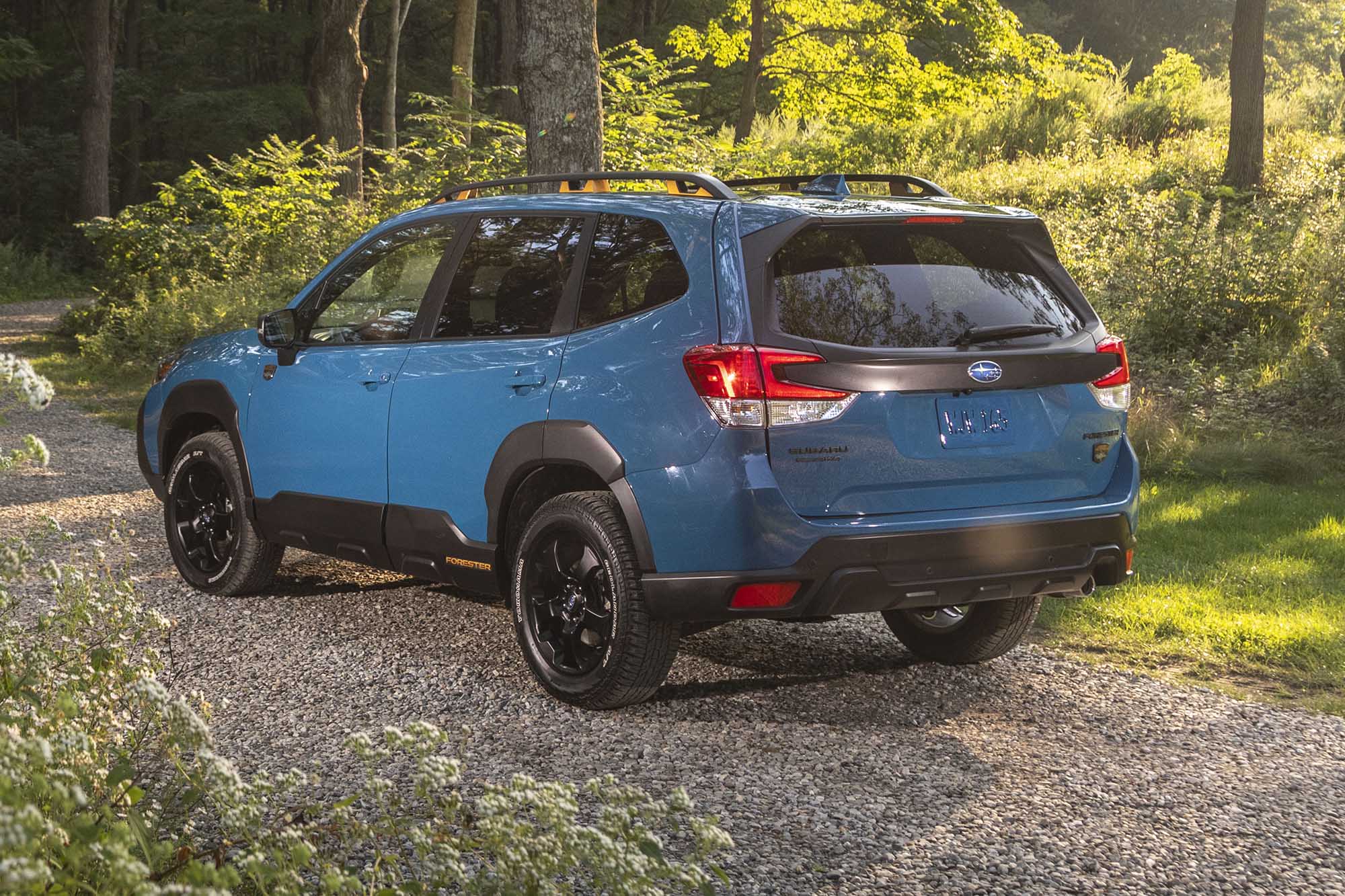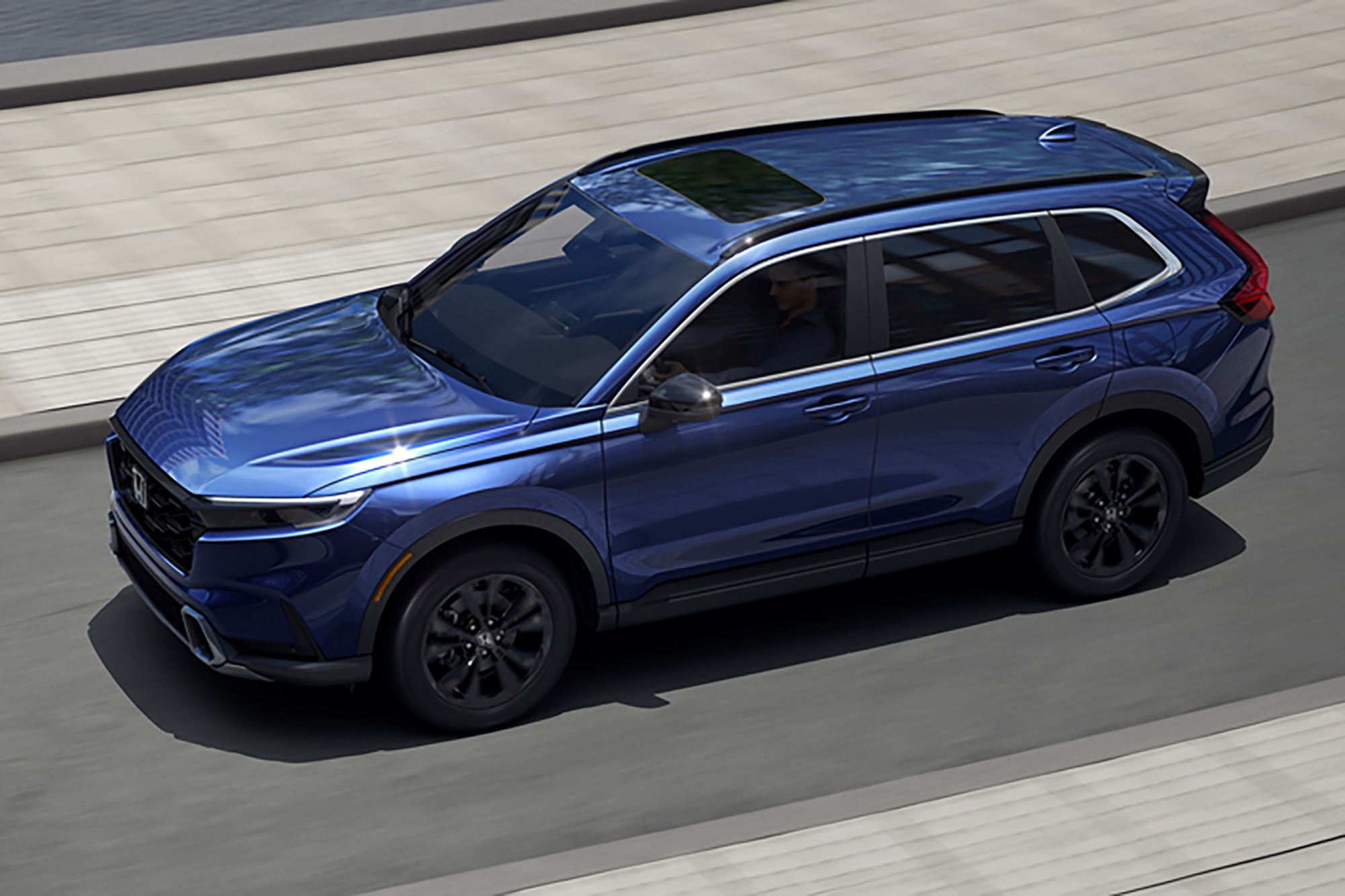Compared: 2024 Subaru Forester vs. 2024 Honda CR-V
Witness off-road ruggedness against city-focused efficiency as these compact SUVs go head to head.
 Subaru | Honda
Subaru | Honda
SUVs can serve many different purposes — they can be economic yet capable daily drivers, as with the 2024 Honda CR-V, or they can handle challenging weather and terrain, like the 2024 Subaru Forester. Is the CR-V's available hybrid system a good fit, or is the Forester's standard all-wheel drive (AWD) a must-have? These two-row crossovers offer different versions of SUV capability.
 Honda
Honda
The CR-V Has a Hybrid Option but the Forester Has Standard AWD
Subaru offers the Forester in six trim levels, beginning with the base Forester, which starts near $28,000. The Wilderness, which sits in the middle of the group, is a $36,000 outdoorsy model tailored to the adventure-inclined. The top-of-the-line Forester Touring, which starts at around $39,000 and features luxury appointments like leather upholstery, rounds out the lineup. All trims use Subaru's 182-hp 2.5-liter four-cylinder engine.
At just under $31,000, the CR-V's pricing begins slightly higher than the Subaru. The Honda uses a 190-hp turbocharged 2.0-liter four-cylinder, which makes it slightly more potent than the Forester, and with 204 horsepower on tap, the CR-V Hybrid is even more powerful. The first Hybrid trim is just over $35,000, and the most expensive CR-V variant is the $42,000 Sport Touring Hybrid
While the Forester is not currently available as a hybrid, it does come standard with AWD, which is uncommon for a compact SUV — as evidenced by the CR-V. Upgrading to Honda's AWD drivetrain upgrade costs $1,500.
 Subaru
Subaru
The Forester Is Off-Road Ready, but the CR-V Boasts More Interior Perks
The off-road readiness of the Subaru shines through regarding ride height and towing capacity. The stock Forester sits 8.7 inches off the tarmac, which the Wilderness trim lifts to an even more impressive 9.2 inches. The CR-V, by comparison, has a clearance of 7.8 inches. The Wilderness edition can haul up to 3,000 pounds of gear, doubling the 1,500-pound rating of the standard CR-V and tripling the CR-V Hybrid's 1,000-pound limit.
Although the Forester is well-suited for a day on the trails, the CR-V offers some valuable creature comforts the Subaru can't match, such as an available wireless phone charging pad. A 9.0-inch infotainment screen is also available, while the largest screen Subaru offers is 8.0 inches. In addition, the CR-V offers 76.5 cubic-feet of cargo space versus the Forester's 74.2 cu-ft.
 Honda
Honda
The CR-V's Fuel Economy Ratings Edge Out the Less Efficient Forester
The Honda has better peak fuel efficiency thanks to its available hybrid platform. While the hybrid is the most economical, coming in at 43/36/40 mpg city/highway/combined with front-wheel drive (FWD) and 40/34/37 mpg with AWD, the conventional gas-powered CR-V rates at 28/34/30 mpg with FWD and 27/32/29 mpg with AWD.
The Forester clocks in at 26/33/29 mpg, and the off-road-oriented Forester Wilderness edition manages 25/28/26 mpg.
All vehicle pricing includes MSRP plus destination charges (set at the time of publication), and will be rounded to the nearest thousand.
Written by humans.
Edited by humans.
Related articles
View more related articles
